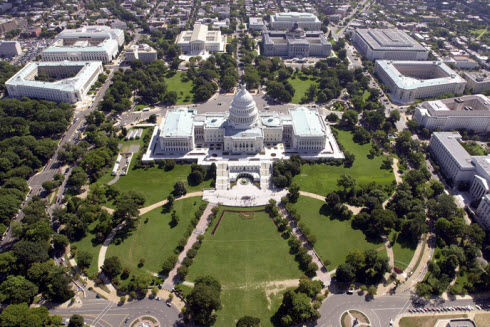Lame Duck Look Ahead: FY 2023 Appropriations
When Congress returns to Washington after the midterm elections, lawmakers will have a number of legislative items to tackle, including addressing Fiscal Year (FY) 2023 appropriations for federal agencies. While the House approved all 12 of their FY 23 appropriations bills and the Senate Appropriations Committee released all 12 bills, Congress was unable to pass a full FY 23 spending package.
Therefore, in late September, prior to returning to their respective constituencies for a pre-election recess, Congress passed a continuing resolution (CR) to keep the government funded at current levels through December 16th. The CR included:
- $12 billion in aid for Ukraine
- $2.5 billion to aid communities devastated by natural disasters
- $1 billion in funding for the low-income home heating program
- $20 million to address the Jackson, Mississippi water crisis.
The CR, however, means that Congress will need to reach an agreement on FY 23 funding levels when they reconvene after the election. Therefore, before the end of the year, lawmakers will either need to approve a full-year spending package or punt by passing another short-term spending measure, which will extend into the 118th Congress. The 118th Congress will officially open on January 3rd.
What to Expect for FY23 Appropriations
As we look ahead to the lame duck session, the FY23 appropriations package has the potential to attract a few legislative hitchhikers, such as Hurricane Ian relief funds, tax breaks, additional money for Ukraine, and COVID-19 and monkeypox aid. Other health-related provisions that may be attached to an omnibus bill include measures to overhaul how the Food and Drug Administration (FDA) regulates dietary supplements and bolster kidney dialysis coverage.
Another big piece of legislation that may have a path forward through an appropriations bill is the Energy Independence and Security Act. Sen. Joe Manchin’s (D-WV) permitting reform bill was ultimately left out of the CR due to resistance from both parties. The bill, however, calls for three major things:
- A two-year timetable for environmental reviews of major projects under the National Environmental Policy Act (NEPA)
- A 150-day statute of limitations for court challenges to project authorization decisions
- Requirements that a single environmental document prepared by a designated agency be used for project reviews and authorizations.
The upcoming midterm elections, taking place across the country on November 8th, may also present implications for a spending bill. If Republicans win majorities in both the House of Representatives and the Senate, they could choose to defer passing a full-year omnibus bill until after the new Congress convenes.
In May, ASCE sent appropriators our organization’s top funding priorities for FY 23. Those letters included requests to the subcommittees on Commerce, Justice, and Science; Energy and Water; Homeland Security; Interior and Environment; and Transportation, Housing, and Urban Development.
Implementation of the IIJA in FY 23
In terms of the implementation of the Infrastructure Investment and Jobs Act (IIJA), the CR will not be as restrictive on highway formula funding in FY 23 as it was in 2022. Last year’s CR made deployment of the IIJA challenging because it held transportation program spending at FY 2021 levels. This meant that state and local transportation agencies were prevented from accessing the substantial funding increases for existing formula programs and obligating funds for new formula programs created by the law.
This time around, a CR will provide funding at the levels set after the huge jump in first-year IIJA funds. Total highway formula funding in FY 22 was $59.3 billion, which was a $15.9 billion increase over Fixing America’s Surface Transportation (FAST) Act levels. The highway formula bump in FY 23 is $752 million, which is not nearly as drastic as an increase.
On October 11th, the Federal Highway Administration (FHWA) announced it is releasing $59.9 billion in apportioned funding for FY 23. All 50 states, the District of Columbia, and Puerto Rico are receiving the funds to help them continue rebuilding roads and bridges.
Funding levels were also released for new programs, such as the Carbon Reduction Program and the National Electric Vehicle Infrastructure Formula Program, as well as existing programs, including the Surface Transportation Block Grant (STBG) program.
ASCE will continue closely following the FY 23 appropriations process during the lame-duck period.
